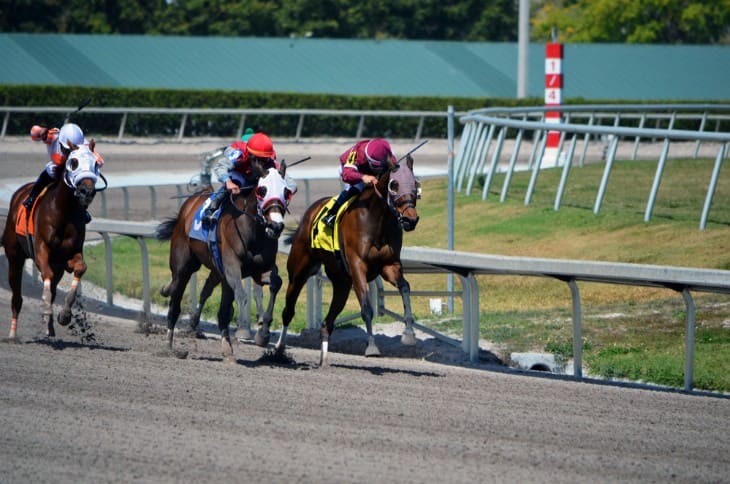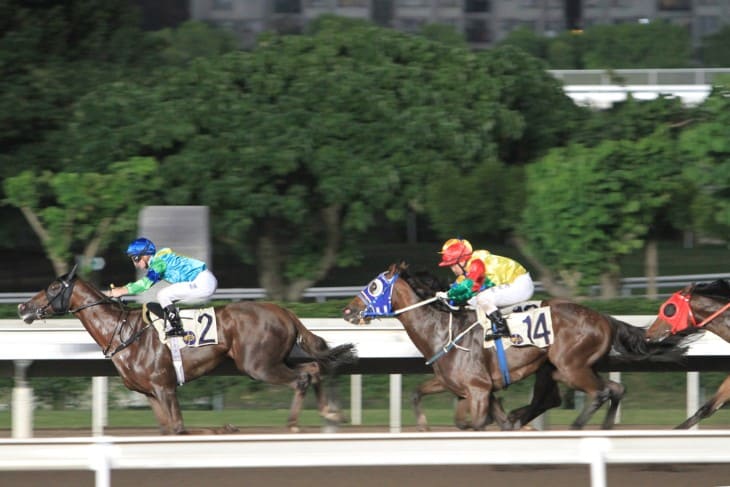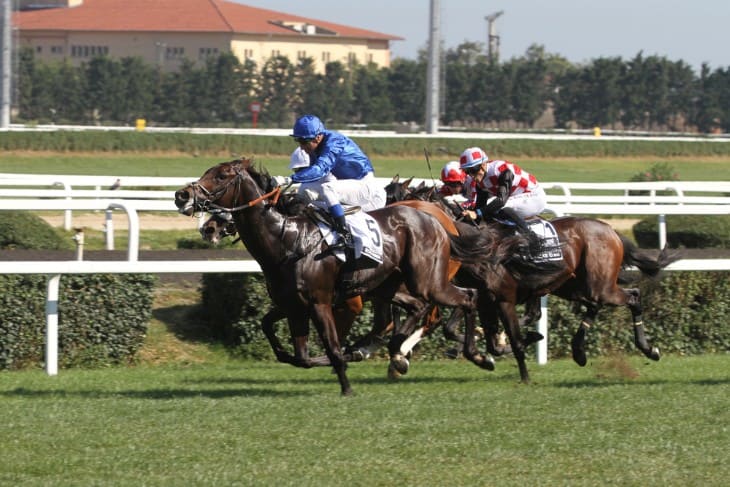- Weathering the Race: The Impact of Weather on the Grand National
- Key Weather-Linked Races in Grand National History
- Preparing Horses and Jockeys for Weather Variabilities
- Rain Influence: Track Conditions and Race Strategies
- The Impact of Wind on Racing Performance
- Temperature Extremes and Their Effects on the Grand National
- Advanced Meteorological Techniques in Horse Racing
- Weather Prediction: A Critical Tool for Event Organizers
- Environmental Adaptation in Horse Racing
- Final Verdict
Weathering the Race: The Impact of Weather on the Grand National
One cannot overestimate the significance of weather in horse racing, especially during such a grand event as the Grand National. Race strategies, track conditions and overall performance of horses and jockeys are directly affected by weather conditions. To exemplify:
- State of the Racing Track: The state of the racing track is highly influenced by the weather. For example:
- Rainy Weather: Wet grounds occasioned by rainfall may cause races to take longer and have a high likelihood of falling.
- Dry Weather: Conversely, in dry climates, race tracks can become challenging, with the possibility of faster but riskier racing that could injure horses.
- Visibility and Safety: Heavy rain, fog, or snow can greatly decrease visibility, such as for jockeys and horses, thus affecting security.
- Wind: A horse’s performance is dependent on wind direction. A strong headwind will slow down a race, while a following wind can lead to faster times.
- Temperature: Extreme temperatures, whether hot or cold, affect their stamina and health. In extremely hot weather, there is a concern about overheating and dehydration, whereas freezing conditions may lead to muscle stiffness.
Trainers and jockeys must comprehend such circumstances as they form their strategies around them. Races involved, equipment choices, or tactics may depend on the expected weather forecast for Grand National Day.
Key Weather-Linked Races in Grand National History
The historical account shows that some races within the history of Grand National were characterised by apparent effects resulting from lousy weather conditions associated with this sport. The most memorable was the 2001 Grand National, infamous for its downpour and treacherous setting. This implied that only four horses managed to complete the course after it became an impenetrable ordeal both human beings (riders) and animals (horses) had gone through. It proved beyond any reasonable doubt how disasters like harsh climatic conditions have a bearing on the safety and finish rates in this type of sport, forcing people to question if it would be suitable for races to go on with poor climatic conditions.
Another such moment was during the 1997 Grand National, when a bomb threat disrupted the race, and it had to be postponed for the first time in the event's history. On Monday, when it finally took place, sunny conditions were quite unusual, as per Liverpool’s commonly known April weather. The excellent weather led to harsher ground, making runners move faster than expected on the day initially set aside for the racing. These past races demonstrate how adverse weather conditions interrupt and redefine horse racing events.
Preparing Horses and Jockeys for Weather Variabilities
Given its unpredictable nature, the British climate demands elaborate preparations so horse jockeys can adapt to diverse weather conditions. Training programs are often adjusted to accommodate horses' possible race-day weather patterns. For instance, those expected to compete under wet circumstances shall be trained on wetter grounds so that their legs get used to slippery grass surfaces. In addition, training under windy conditions can enable both animals and humans involved in racing to learn better ways of coping with windstorms, which might disrupt balance or slow down pace while running through them.
On the other hand, jockeys need to know how to adjust their riding style due to weather changes. In contrast, during sunlit, dry weather, a more fast-paced strategy for racing might be best. The jockey should also have suitable equipment, such as waterproof clothing for rainy days and breathable materials for hot days. This collaboration between trainers, jockeys, and support teams is vital in ensuring that the horse and rider are well prepared for adverse weather on race day, regardless of the actual forecast.

Rain Influence: Track Conditions and Race Strategies
Rain is one factor that significantly affects the dynamics at play on the track. This makes even an already challenging course of the Grand National more unpredictable, especially when it rains. Firstly, rain affects various aspects, including:
- Track Conditions: Rain can significantly alter the texture of race tracks. Key changes include:
- Softening of the Ground: Rain makes racing surfaces softer, affecting the speed and safety of a race; hence, horses that thrive under these conditions may have an edge.
- Increased Risk of Slips and Falls: A wet track increases the chances of horses slipping over, especially on jumps, leading to falls and eventual injuries.
- Race Strategies: Jockeys and trainers must adapt their strategies to the wet conditions. This may include:
- Conservative Riding: In wet conditions, riders could choose to go slow, considering horse safety issues or stamina preservation rather than being reckless racers.
- Selection of Horses: Some horses perform better on wet tracks, so trainers prefer entering them into races with predicted rainfall, while others do not want such options.
Rainfall volumes alongside its time plans concerning this game can lead to mechanisms for last-minute strategy adjustments. Unpredictability compounds the difficult task of preparing for the Grand National, providing additional complexity.
The Impact of Wind on Racing Performance
Wind, as another critical weather element, has the potential to affect the outcome of horse races significantly. Unlike rain, wind is less visible but equally powerful. Being an open course, the Grand National is most susceptible to wind’s vagaries. Some difficulties arise from high winds:
- Resistance and Speed: Horses can be slowed down by headwinds that make speed challenging to maintain, especially for long distances; alternatively, a strong tailwind could help a horse accelerate, resulting in faster race times.
- Jumping Accuracy: Wind can affect a horse’s ability to judge and execute jumps accurately. Gusts can cause a horse to become unbalanced and misjudge its jumps, leading to increased fall risks.
Jockeys must demonstrate considerable skill in dealing with their horses in windy conditions. This encompasses making decisions about pacing and positioning in real-time, particularly when facing crosswinds that can interfere with a horse’s racing line. Trainers also play a significant role since they have to train their horses so that they are not distracted by the physical impact or by gusts of wind during competition. The effect of weather on race performance, as seen through the lens of wind, adds another layer of complexity and unpredictability to this already challenging Grand National.
Temperature Extremes and Their Effects on the Grand National
While rain and wind are immediate concerns, temperature extremes also substantially impact weather and race conditions. It may be held in April, but these wide-range temperatures affect both horses and the racing environment at the Grand National. Here’s how temperature can play a significant role:
- Hot Weather: Heat exhaustion is one risk horses face when racing on sweltering days. Trainers must regulate body temperatures to avoid dehydration or fatigue during the race. Beforehand, trainers should give their animals plenty of water, while some might take advantage of cold baths or fans.
- Cold Weather: Horses can stiffen their muscles and become less supply in chilly weather. This may hamper their performance and increase the risk of injuries. Riders must be aware of these conditions and appropriately warm up their horses.
The temperature on race day is essential for both jockeys' and horses’ health, and it is another aspect that trainers and riders should consider when preparing for the Grand National.
Advanced Meteorological Techniques in Horse Racing
As horse racing begins to recognise that this weather impacts results more than ever, they have turned to advanced meteorological techniques to gain an edge. It is worth noting that meteorology is essential in race planning and decision-making. The following are ways in which advanced meteorological techniques are used in horse racing:
- Precision Forecasting: Race organisers rely on accurate weather forecasts, which provide real-time information about temperature, wind speed, rainfall, and humidity, among other things. These forecasts help riders and trainers make decisions regarding tactics or equipment.
- Microclimate Analysis: The weather conditions across some racecourses can vary significantly within short distances, creating microclimates. Advanced meteorological techniques allow organisers of races like these courses full control through monitoring these microclimates.
- Climate Modelling: Long-term climate data and models anticipate broader climate trends that may affect racing in the coming years. This is particularly important as the sport grapples with the challenges of climate change.
Horse racing today uses the weather to navigate how climatic changes can more than ever affect race outcomes. These sophisticated techniques make decision-making easier, making it safer and enhancing performance during events like the Grand National.

Weather Prediction: A Critical Tool for Event Organizers
Accurate weather predictions are necessary for horse racing, also known as the Grand National. The importance of up-to-date first-hand information regarding race outcomes explains why weather is crucial. This is how weather forecasting works:
- Safety Considerations: Safety should be the topmost priority for horses and jockeys. Race organisers use weather forecasts to anticipate unfavourable conditions such as heavy rains or strong winds and take necessary precautions. For example, competitions may be postponed to save competitors from danger.
- Track Preparation: Races are influenced by climate patterns during their run. Forecasts help the ioniser prepare the track properly. In expected rain showers, extra drainage systems are to be installed, and installation and dry conditions call for watering to maintain track constancy.
- Spectator Experience: This means an accurate weather forecast applies to people watching this event live. To facilitate better planning, including what to wear and how they would experience themselves on the field, it is good to heed what’s been predicted about tomorrow’s condition outside their houses rather than assuming things could remain constant throughout the day.
Currently, available technology on meteorology has enabled race organisers of significant horse racing events such as the Grand National to receive real-time updates that inform them of safety concerns, among other issues.
Environmental Adaptation in Horse Racing
The horse-racing industry must now adapt to environmental challenges resulting from the increased impacts of bad weather on race events around us. These factors go beyond immediate weather considerations and promote broader environmental thinking within our sport. Here are some highlights concerning this adaptation:
- Sustainable Practices: Due to ecological concerns associated with horse racing, sustainability is becoming increasingly important. Measures include reducing water usage on racecourses, minimising energy consumption, and using eco-friendly construction materials in tracks and facilities.
- Climate-Resilient Infrastructure: Race organisers are investing in climate-resilient infrastructure to withstand the possible impacts of global warming. This involves constructing extreme weather-resistant tracks, stables, and other facilities to ensure the safety of horses and humans working there.
- Environmental Responsibility: Various efforts aimed at environmental stewardship have been initiated within the industry. These include conserving natural habitats around racetracks, waste reduction drives, and recycling promotion across the horseracing sector.
Horse racing seeks to proactively address these environmental issues to remain sustainable by mitigating weather-induced effects on events while supporting broader ecological aspirations.
Final Verdict
The Grand National reminds us that it is connected with the ever-changing weather patterns typical of the British Isles. Weather influences track conditions, race tactics, and strategies requiring advanced meteorological techniques. However, there may be things that will be okay!








